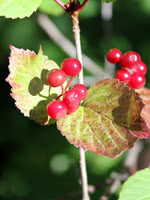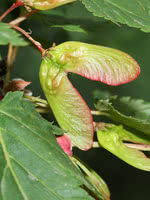Mon-Fri 9am - 5pm Mountain time
Lowbush Cranberry vs Douglas Maple
Viburnum edule
Acer glabrum
NOT AVAILABLE THIS SEASON - MIGHT RETURN
CUSTOM GROW
Lowbush Cranberry is a short, deciduous shrub native to North America. Its white flowers bear sour but edible fruit that ripens to a brilliant red in fall. Lowbush Cranberry's small size makes it suitable for urban use; buyers will also find it useful if trying to reclaim land back to its original species or when landscaping with native species in damp conditions.
Douglas Maple is a fast growing, long lived, ornamental tree. It can take on a shrubby or multi-stemmed form with densely packed leaves, making it an excellent tree for privacy screens and hedges.
In the fall, the leaves make a brilliant change to red, orange, or yellow depending on the tree and its sun exposure. Douglas Maple's compact size makes it ideal for planting in urban yards and under power lines.

